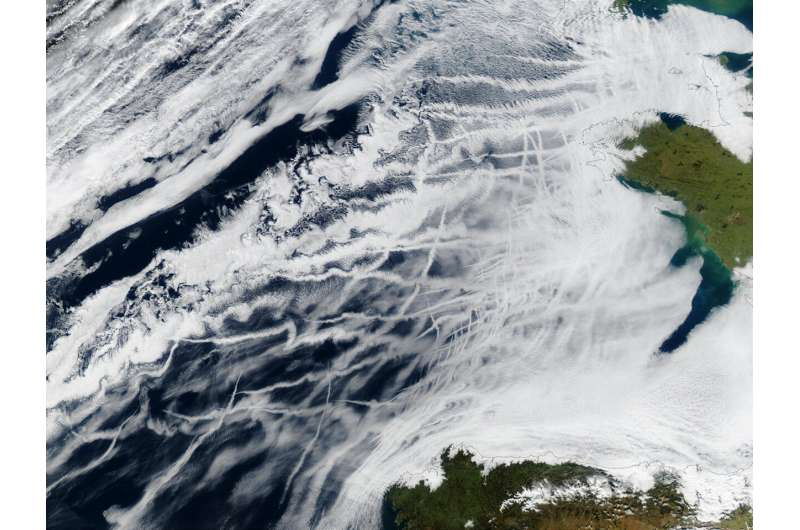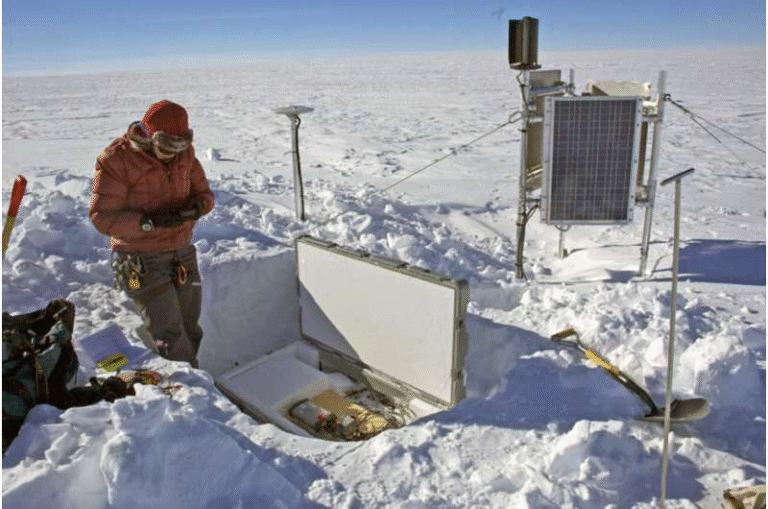Cleaner Air Is Accidentally Making Earth Warm Faster by Dimming the Reflectivity of Marine Clouds

A new study published in Nature Communications brings forward a surprising and important climate twist: as global air pollution declines, marine clouds are becoming less reflective, allowing more sunlight to hit Earth’s surface and speeding up warming. This isn’t speculation but a detailed analysis spanning 20 years of satellite observations over two major ocean regions—the North Atlantic and the Northeast Pacific—both of which have warmed unusually fast in recent decades.
The research team, led by scientists at the University of Washington, found that from 2003 to 2022, clouds in these regions became almost 3% less reflective per decade. About 70% of this drop was linked to reductions in aerosols—tiny airborne particles released mainly through fossil-fuel burning. These particles are known to help clouds form brighter, more reflective droplets. So as countries clean up their air, there are fewer particles available, and the clouds lose some of their brightness.
Below is a clear, detailed breakdown of what the study shows, why these changes matter, and how they fit into the broader climate picture.
What the Study Found
This research focused on two major ocean basins that play a crucial part in regulating global temperatures. Using satellite data from 2003 to 2022, the scientists discovered:
- Marine clouds in these areas became roughly 2.8% less reflective per decade.
- This dimming increased the amount of solar energy absorbed by Earth’s system by about 1.04 W/m² per decade in those regions.
- Since these ocean areas make up around 14% of the planet’s surface, that adds up to an additional 0.15 W/m² per decade of global energy absorbed—an amount that meaningfully affects the pace of warming.
- Around 69% of the reflectivity decline was due to reductions in aerosol pollution, based on modeling and observational data.
- Measured cloud-droplet number concentrations dropped significantly. For instance:
- North Atlantic: –6.7 cm⁻³ per decade
- Northeast Pacific: –2.9 cm⁻³ per decade
- Aerosol optical depth (AOD), a measure of the amount of particles in the atmosphere, also fell sharply over both regions.
- Sea surface temperatures in these areas rose by roughly 0.19°C per decade, adding an additional factor influencing cloud behavior.
These findings support something climate scientists have suspected: reducing particulate pollution—while unquestionably good for human and ecosystem health—also removes some of the “masking” effect that previously hid part of the warming caused by greenhouse gases.
Why Aerosols Matter So Much
Aerosols might sound like a small part of the climate equation, but their influence on clouds is enormous. They act as cloud condensation nuclei, helping water vapor gather and form droplets. With more aerosols, clouds get:
- More numerous but smaller droplets
- Higher reflectivity (they look brighter and reflect more sunlight)
- Longer lifespans, because smaller droplets evaporate less quickly
This is known as the Twomey effect and the Albrecht effect.
When aerosol levels drop, the opposite happens:
- Fewer droplets form
- Droplets grow larger
- Larger droplets fall as precipitation faster
- Clouds dissipate sooner and reflect less sunlight
- More sunlight reaches the ocean surface
This is exactly what the new study documents across the two ocean regions.
Why These Regions Were Chosen
The North Atlantic and Northeast Pacific are home to massive sheets of low-lying marine stratocumulus clouds. These clouds are incredibly important climate regulators because they reflect enormous amounts of sunlight back into space. Any change in their brightness can have a measurable impact on global temperatures.
These two regions have also experienced some of the strongest ocean-surface warming trends globally, making them ideal for studying aerosols, clouds, and warming together.
The Role of Climate Models
The authors compared their observations to existing Earth System Models (ESMs) used in assessments like CMIP6. Many of these models underestimated the decline in cloud reflectivity and therefore underestimated the warming caused by reduced aerosols.
By adjusting how models handle aerosol-cloud interactions—particularly cloud-droplet formation—the researchers were able to significantly improve the accuracy of cloud reflectivity simulations.
This matters because climate projections rely heavily on these models. If the models underplay this effect, it means the real world may warm faster than some current projections suggest.
What This Means for Future Warming
Cleaner air policies have dramatically improved public health. Laws like the Clean Air Act of 1963 and modern sulfur-emission regulations have reduced harmful aerosols worldwide. But this progress has unintentionally allowed Earth to absorb more solar energy.
The study doesn’t argue against clean air—far from it. Instead, it clearly states that in order to plan climate strategies effectively, we need to understand:
- How much warming was previously being masked
- How much additional warming might be expected as aerosol levels continue to drop
- How cloud behavior will evolve in a cleaner atmosphere
Because aerosol emissions are likely to continue falling as clean energy replaces fossil fuels, the effect identified in this study could persist or even grow over the coming decades.
Marine Cloud Brightening: A Possible Solution?
One potential climate intervention mentioned in the study is marine cloud brightening, a technique where ships spray seawater particles into the atmosphere to make clouds more reflective.
The idea is to create a cleaner, non-polluting substitute for the aerosols that previously kept clouds bright.
Scientists are researching this method as a way to temporarily reduce warming. But they also warn that:
- The technique needs more testing
- It could have unintended consequences
- It must not be treated as a replacement for cutting greenhouse gas emissions
Still, the aerosol-cloud relationship revealed in this study is the same mechanism that marine cloud brightening aims to use intentionally.
Additional Context: Aerosols and Climate
To provide some broader background for readers, here are a few important points about aerosols:
Aerosols cool the planet
They reflect sunlight and create brighter clouds. Without human-made aerosols, the world today might already be 0.2–1.0°C warmer, depending on estimates.
Aerosols have short lifetimes
Unlike CO₂, which stays in the atmosphere for centuries, aerosols fall out within days to weeks. This means any changes to aerosol emissions show up in the climate almost immediately.
Natural aerosols exist too
Volcanoes, dust storms, sea salt, and biogenic particles also produce aerosols. But the big 20th-century cooling influence came from industrial sulfur emissions.
The aerosol decline is global
Emissions from North America and Europe fell first, and now even China—once the world’s largest source—is rapidly reducing aerosol pollution.
This reinforces the global relevance of the study: as the planet gets cleaner, clouds everywhere may dim.
Final Thoughts
This new research helps clarify something climate scientists have struggled to explain—why real-world warming in 2023 and 2024 exceeded many model projections. The dimming of marine clouds, driven largely by reduced aerosol pollution, appears to be a significant piece of that puzzle.
The takeaway is both reassuring and sobering: improving air quality saves lives and ecosystems, but it also unmasks additional warming that we need to account for. Understanding these complex interactions between clouds, aerosols, and warming will be essential for building accurate climate forecasts and making smart policy decisions.
Research Paper:
Reduced aerosol pollution diminished cloud reflectivity over the North Atlantic and Northeast Pacific (Nature Communications, 2025)





